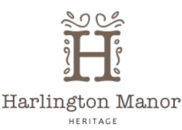History
English Heritage, in their listing notice, ascribe Harlington Manor to the 16th century, though it is highly likely, having regard to architectural, documentary and locational information, that the house dates, in fact, to the late 14th century and possibly even to an exact date-1396. The proto feminist, lady of letters and Wingate relation, Anna Letitia Barbauld, claimed, in her memoirs, published posthumously, that her uncle remembered a nameplate bearing that date. The ground floor plan follows, as to the earliest part of the house, classic hall house configuration, whilst flat laid joists in the little parlour, evidence of a screens passage , proximity to the church and the layout of individual rooms all strongly suggest a medieval construction date.
The house was initially owned by the Burwell Family (who eventually emigrated, in the 17th century, to Virginia), from around 1400, but it passed, through intermarriage, to the Wingate family in the early 17th Century. It was, the listing notice claims, actually owned by Edmund Wingate, mathematician and tutor to Queen Henrietta Maria.
Famously, John Bunyan, the English divine, was interrogated by Sir Francis Wingate and briefly imprisoned in the house, in November 1660. Bunyan was sent to Bedford gaol where, over the next 12 years, he wrote The Pilgrim's Progress. It is thought that Harlington Manor is the only building, still standing, at which Bunyan is known to have stayed.
Charles II is said to have stayed briefly at the house in the late 17th century, possibly to thank Sir Francis Wingate for his help in dealing with the potential sedition of John Bunyan, or, perhaps more probably, to attend the wedding of Sir Francis, to the daughter of the Earl of Anglesey. Certainly, Sir Francis was knighted around the time of the marriage-marriage into the aristocracy being a common reason for elevation into the aristocracy.





